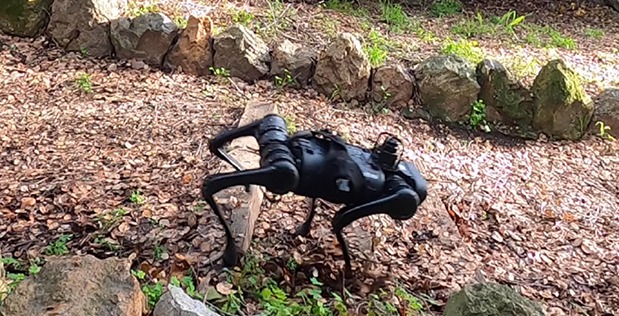
At the Defense Advanced Research Projects Agency (DARPA) Machine Common Sense (MCS) program, researchers last week offered demonstrations of improvements to robotic system performance, showcasing advancements in intuitive physics, intentional actors, and spatial navigation.
Comparing the advances to those in a child’s cognition, the researchers aim to create computational models and simulated training to prepare robots for real-world scenarios. This preparation focuses on recognizing and interacting with objects, agents, and places. Their efforts have yielded rapid adaptations to changing terrain, learning how to carry dynamic load, and more.
“These experiments are important milestones that get us closer to building and fielding robust robotic systems with generalized movement capabilities,” Dr. Howard Shrobe, MCS program manager in DARPA’s Information Innovation Office, said. “The prototype systems don’t need large sensor suites to deal with unexpected situations likely to occur in the real world.”
An experiment at the University of California, Berkeley created a rapid motor adaptation algorithm that allowed quadruped robots to adapt when coupled with proprioceptive feedback – the sense of self-movement and body position. In that experiment, the researchers noted that robots successfully navigated a range of real and simulated terrain, which could prove helpful for military units with load carrying and sensing.
Speaking of loads, Oregon State researchers also showed that a bipedal robot could be taught how to carry dynamic loads with only proprioceptive feedback. In a simulated-to-real learning environment, a robot named Cassie learned commonsense behaviors, adapting its stride to incorporate adjustments in its load, like sloshing liquids or balancing weights. The robot walked for several moments on a treadmill with differing load types. Before training, the robot tumbled immediately.
Collaboration between researchers at the University of Utah and the Oregon State University MCS team also created an algorithm to allow robots equipped with multi-fingered hands to grasp previously unseen objects – when trained – in simulation. After training, a robot was able to grasp with greater than 93 percent real-world success on novel objects, as opposed to the 78 percent offered by existing passive learning approaches.
Other areas of research included attempts to create a commonsense knowledge repository capable of allowing robots to learn from reading the web and answer natural language and image-based questions about common sense phenomena. A scalable, machine-authored knowledge base to increase the diverse representation of the world and a variety of approaches to learn the common sense structure of human behavior and physics from videos were also among current research.




